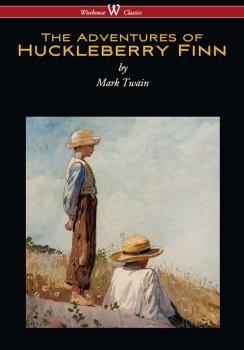ТОП просматриваемых книг сайта:
Mark Twain
Список книг автора Mark TwainАннотация
THE ADVENTURES OF HUCKLEBERRY FINN is a novel by Mark Twain, first published in the United Kingdom in December 1884 and in the United States in February 1885. Commonly named among the Great American Novels, the work is among the first in major American literature to be written throughout in vernacular English, characterized by local color regionalism. It is told in the first person by Huckleberry «Huck» Finn, a friend of Tom Sawyer and narrator of two other Twain novels (Tom Sawyer Abroad and Tom Sawyer, Detective). It is a direct sequel to The Adventures of Tom Sawyer. The book is noted for its colorful description of people and places along the Mississippi River. Set in a Southern antebellum society that had ceased to exist about twenty years before the work was published, Adventures of Huckleberry Finn is an often scathing satire on entrenched attitudes, particularly racism. Perennially popular with readers, ADVENTURES OF HUCKLEBERRY FINN has also been the continued object of study by literary critics since its publication. It was criticized upon release because of its coarse language and became even more controversial in the 20th century because of its perceived use of racial stereotypes and because of its frequent use of the racial slur «nigger», despite strong arguments that the protagonist and the tenor of the book are anti-racist.
Аннотация
Thomas «Tom» Sawyer is the title character of the Mark Twain novel <em>THE ADVENTURES OF TOM SAWYER</em> (1876). He appears in three other novels by Twain: ADVENTURES OF HUCKLEBERRY FINN (1884), TOM SAWYER ABROAD (1894), and TOM SAWYER, DETECTIVE (1896). Sawyer also appears in at least three unfinished Twain works, HUCK AND TOM AMONG THE INDIANS, SCHOOLHOUSE HILL and TOM SAWYER'S CONSPIRACY. While all three uncompleted works were posthumously published, only Tom Sawyer's Conspiracy has a complete plot, as Twain abandoned the other two works after finishing only a few chapters. <br/> <br/> The fictional character's name may have been derived from a jolly and flamboyant fireman named Tom Sawyer with whom Twain was acquainted in San Francisco, California, while Twain was employed as a reporter at the San Francisco Call. Twain used to listen to Sawyer tell stories of his youth, "Sam, he would listen to these pranks of mine with great interest and he'd occasionally take 'em down in his notebook. One day he says to me: 'I am going to put you between the covers of a book some of these days, Tom.' 'Go ahead, Sam,' I said, 'but don't disgrace my name.' " Twain himself said the character sprang from three people, later identified as: John B. Briggs (who died in 1907), William Bowen (who died in 1893) and Twain; however Twain later changed his story saying Sawyer was fully formed solely from his imagination, but as Robert Graysmith says, «The great appropriator liked to pretend his characters sprang fully grown from his fertile mind.»
Is He Dead? - Mark Twain
Jumping Frogs: Undiscovered, Rediscovered, and Celebrated Writings of Mark TwainАннотация
Информация о книге
Автор произведения Mark Twain
Жанр Языкознание
Серия Jumping Frogs: Undiscovered, Rediscovered, and Celebrated Writings of Mark Twain
Mark Twain’s Book of Animals - Mark Twain
Jumping Frogs: Undiscovered, Rediscovered, and Celebrated Writings of Mark TwainАннотация
Информация о книге
Автор произведения Mark Twain
Жанр Языкознание
Серия Jumping Frogs: Undiscovered, Rediscovered, and Celebrated Writings of Mark Twain










